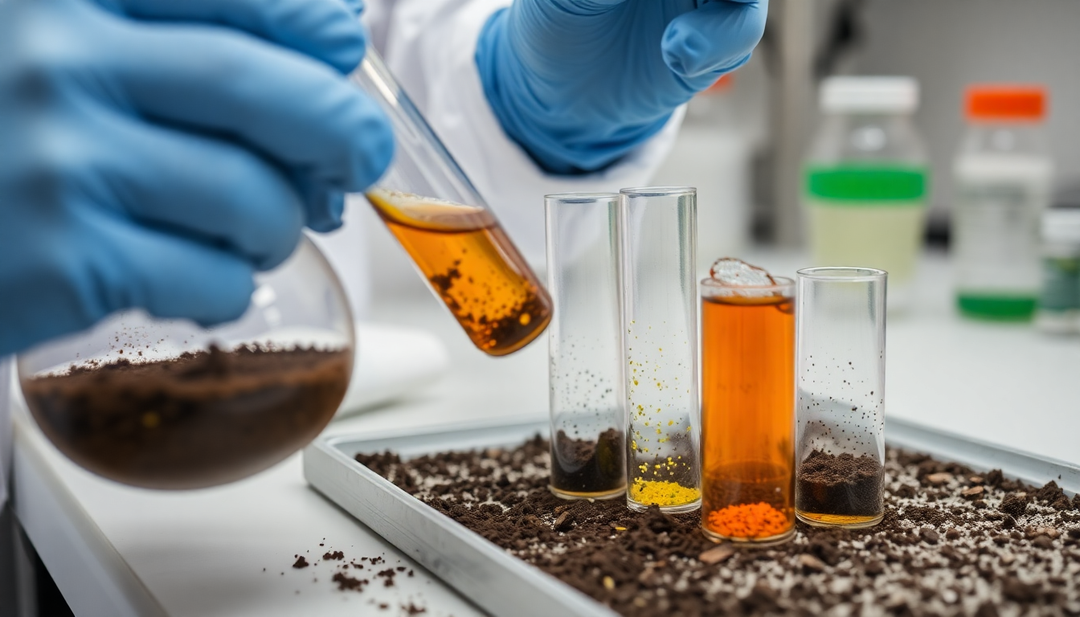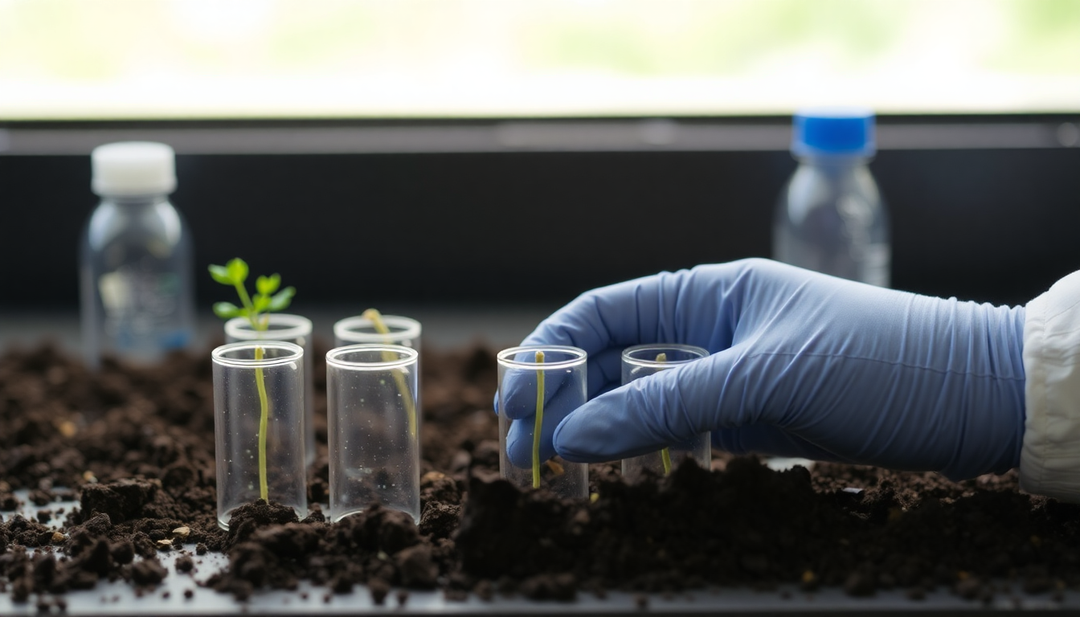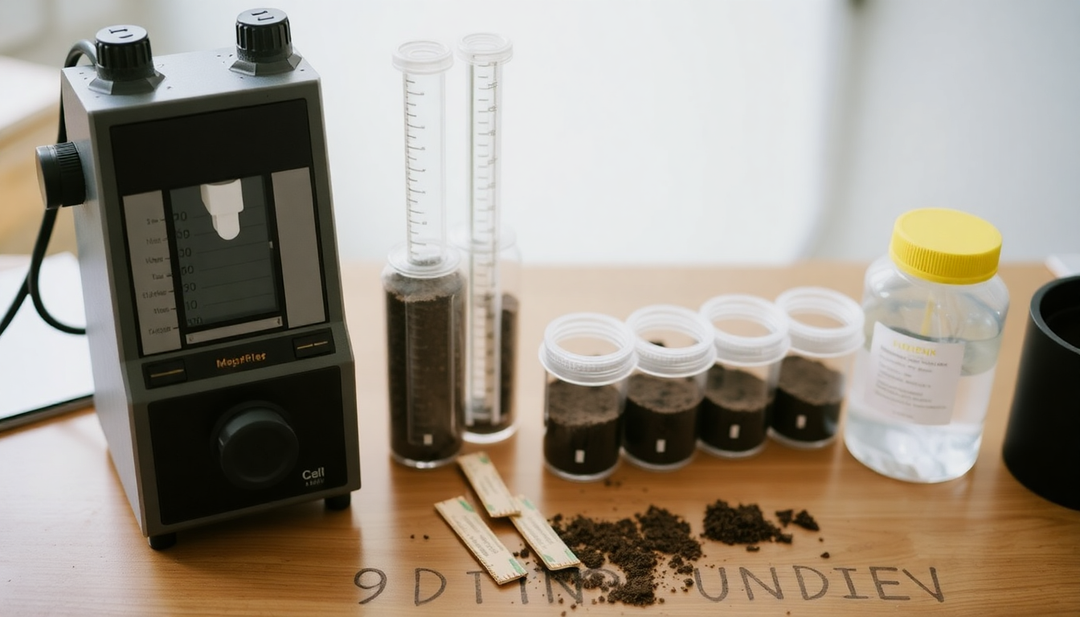Understanding Soil Pollution Diagnosis in 2025: Methods, Costs and Importance of Environmental Analysis

Introduction
In 2025, awareness of soil pollution is greater than ever. Environmental and health issues are driving individuals and businesses to take a closer look at soil pollution diagnostics. This article aims to explain diagnostic methods, the associated costs, and the importance of environmental analysis. In a world where the health of our planet is paramount, understanding soil pollution diagnostics is essential to ensuring a sustainable future.
Soil Pollution Diagnostic Methods
Soil pollution diagnosis relies on several methods that allow land quality to be assessed. Here are the main ones:
- Soil Sample Analysis: This method involves collecting soil samples for laboratory analysis. Pollutants such as PCBs , PAHs , and heavy metals are tested. This step is crucial because it provides an accurate picture of the contamination status.
- Field Tests: In situ tests, such as texture and particle size testing and acid-base status assessment, provide accurate information about the soil. These tests provide insights into the soil's ability to retain water and nutrients, thereby influencing ecosystem health.
- Chemical Analysis: Measuring the presence of fluorides , chlorides , and sulfates is crucial for understanding the chemical composition of the soil. This analysis helps assess potential risks to human health and the environment.
- Biological Assessment: Analyzing the organic and biological state of the soil provides information about its ability to support life. Biological indicators, such as the diversity of soil organisms, can reveal a lot about the overall health of the ecosystem.
- Modeling and Simulation: Technological advances now make it possible to use models to simulate the dispersion of pollutants in soil. These tools help predict long-term impacts and plan corrective actions.
Costs Associated with Diagnosis
The costs of a soil pollution diagnosis can vary considerably depending on several factors:
- Soil Type: Complex soils require more in-depth testing, increasing costs. For example, soil contaminated with hydrocarbons may require additional testing to assess the depth of contamination.
- Methods Used: Chemical and biological analyses can be expensive. It is therefore essential to choose the most appropriate methods based on the specific needs of each site.
- Location: Travel and sample transportation costs can affect the total cost. Remote or difficult-to-access locations may incur additional costs.
- Project Complexity: Projects requiring in-depth case studies or specific interventions may incur additional costs.
On average, the cost of a soil pollution assessment can range from a few hundred to several thousand euros, depending on the size of the site and the required analyses. It is important to obtain detailed quotes and be aware of potential costs from the outset.
Importance of Environmental Analysis
Carrying out a soil pollution diagnosis is essential for several reasons:
- Public Health Protection: Assessing pollution helps protect populations living near contaminated sites. Pollutants can have adverse health effects, including respiratory illnesses, cancers, and other health problems.
- Environmental Preservation: Early diagnosis helps prevent further environmental damage. Soil contamination can also affect groundwater and surrounding ecosystems, causing a domino effect throughout the food chain.
- Legal Compliance: Many regulations require owners to conduct inspections prior to sale or construction. Failure to comply with these requirements can result in significant fines and legal liabilities.
- Improved Property Value: Properties with properly tested and remediated soils tend to retain a higher market value. Performing a soil assessment can increase the confidence of potential buyers.
- Corporate Social Responsibility: For businesses, conducting a soil pollution assessment is a step toward greater social responsibility. It demonstrates a commitment to sustainability and environmental protection.
Case Studies
Case studies illustrate the importance of an accurate assessment. For example, a former industrial site was remediated after the discovery of BTEX in the soil, restoring the environmental health of the area. This project not only improved the quality of life for local residents but also rehabilitated a space for recreational activities.
Another notable case involves a former landfill site where heavy metals were detected. Thanks to a thorough diagnosis, authorities were able to plan an effective remediation plan, thus preventing wider contamination of groundwater.
These examples highlight the importance of environmental analysis in making informed decisions and minimizing risks.
Practical Advice
For those considering a soil pollution diagnosis, here are some tips:
- Consult environmental analysis experts like Pouryère for personalized recommendations. They can guide you through the process and help you choose the appropriate methods.
- Educate yourself about analysis methods and associated costs before making a decision. Proper preparation can save you time and money.
- Find out about the legal requirements for pollution assessments in your area. It's crucial to stay informed of constantly changing regulations.
- Involving stakeholders from the beginning can help facilitate the process and ensure complete transparency.
- Prepare an action plan based on the diagnostic results. This may include remediation measures or strategies to prevent future contamination.
Conclusion
Soil pollution assessment is a crucial step in ensuring public health and environmental protection in 2025. By understanding the methods, costs, and importance of the analysis, individuals can act responsibly and proactively. Make sure you act today, as the quality of our soil is essential to our future. For more information and expert advice, please contact Pouryère .



